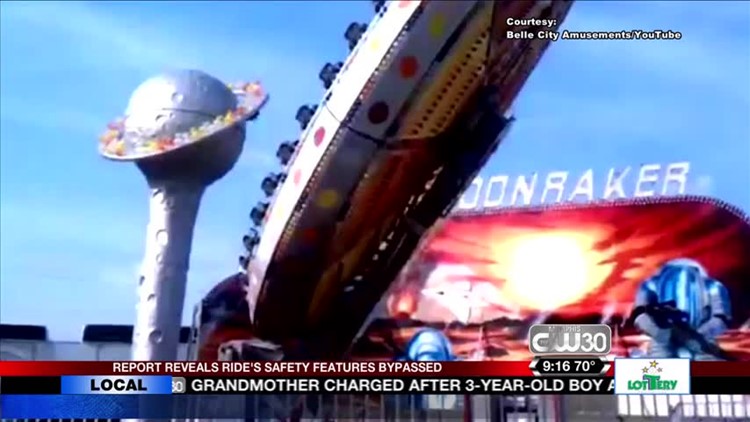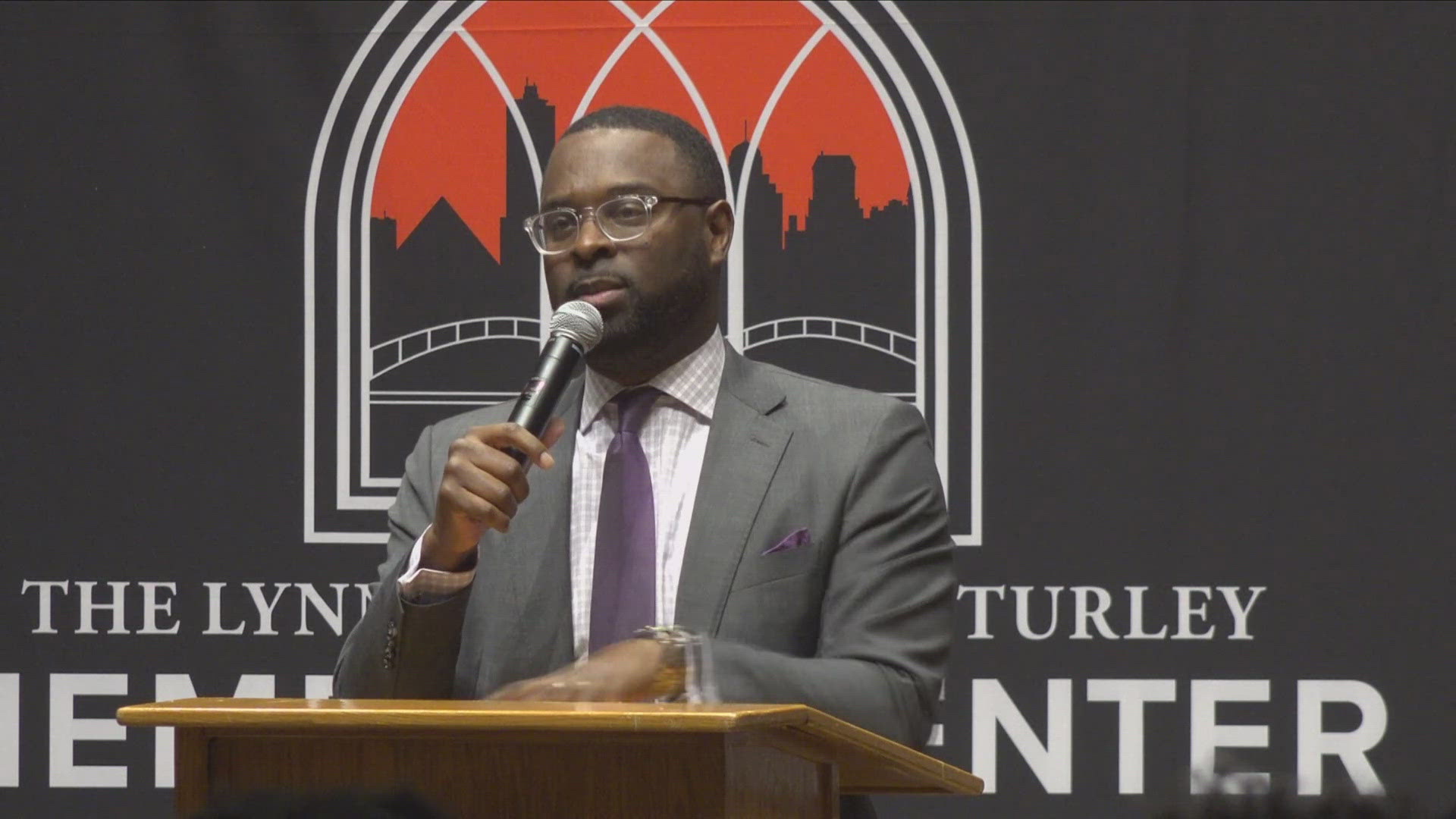Almost six months after nearly one dozen people fell from a ride at the Delta Fair, the Local I-Team uncovered new documents that reveal the ride’s owner failed to follow safety standards recognized by the amusement and carnival industry and adopted by Tennessee law.
Children and teens sustained broken bones and concussions in September, after safety harnesses on the “Moonraker” released before the ride ended.
An inspector’s report, written one day after the incident, reveals the ride’s owner, Belle City Amusements, did not follow safety standards which could have prevented the operator from releasing the riders in mid-air.
Belle City should not have bypassed safety features, and allowed the ride to operate in a mode reserved for performing “maintenance.” Had safety guidelines been followed, the security system would not have allowed the operator to released the harnesses when he pressed the release button.
Kira Parrish fell from the ride. She claims she is still struggling after lingering effects from a concussion.
“I’m a single teenage mom. I am all he has. I didn’t know what was going to happen to him,” said Parrish.
Parrish says she could think of only her 6-month-old son Dimitri when the Moonraker released its harnesses and dropped her in mid air.
“I am sorry,” Parrish said as she paused from the interview to wipe away her tears.
Parrish claims she fell from the ride and hit her head hard on the metal, sustaining a concussion that still causes problems.
“It is hard to concentrate. I forget everything,” she said.
The Consumer Product Safety Commission investigated the Moonraker after the incident. In its report, the CPSC states the ride was lifted at an angle “between 35 and 80 degrees” when the shut down fault light went on.
The report goes on to say the operator switched the ride from automatic to manual, or “maintenance” mode, to lower it to a level position. But the operator then mistakenly hit the “open lap bar switch,” causing the riders to fall.
Spokesmen for the ride at the time blamed operator error or some mechanical malfunction.
“The gentleman operating the ride at the time, competent operator, unfortunately what he did he made a mistake,” said Jerry Smithson of Amusements of America Risk Management on September 4, 2016.
But an inspector’s report, dated one day after the incident and the same day as Smithson’s announcement, revealed that while the ride was operating and in mid-air, “all safeties were bypassed,” allowing the operator to release the harnesses when he pressed the “release” button. That mode, called “maintenance” mode is reserved for fixing rides and not for carrying riders.
According to the president of Outdoor Amusement Business Association and a spokesperson at International Association of Amusement Parks and Attractions:
“Amusement rides (both fixed and non fixed) should have built-in safeguards to prevent operation while in maintenance mode and those safeguards should not be overridden. When it comes to safety, there can be no shortcuts.”
“Bypass means I know it’s there but I am not going to do that,” Randall Fishman, a civil personal injury liability attorney in Memphis. Fishman has litigated amusement ride cases.
“Putting it in the best light for the defendant, it sounds as if there was a mechanism to provide for the safety of these children and they’ve put the operator in a position where he could, where human error could come in. That is what it sounds like, an intentional act, which could give rise to potential punitive damages,” Fishman says.
We contacted the company that owns the ride, Belle City Amusements, with questions raised in the federal report and in our investigation. The Florida-based company has not responded.
Its contractor at Delta Fair, Amusements of America, has also not responded. We did get in touch with Delta Fair owner Mark Lovell, he said the CPSC finding that said the ride was “overhauled” and the inspector’s report that “the safeties were bypassed” was new information to him.
“The last time I spoke with anyone about this, I was told that is the way the ride was designed at the time it was manufactured at the time it was designed,” said Lovell. Lovell could not remember with whom he spoke.
But the CPSC report says the rides program controller which manages the safety system was “overhauled” roughly 10 years after the ride’s manufacturer went out of business with Belle City completing changes to encoders. The CPSC report references a document recommending the confirmation that “designated safeties are in place in the program. For example, all lap bars closed and locked.” It is unclear when that document was written and who wrote it. The CPSC, however, does say the only operating manual is about thirty years old and the ride was subsequently overhauled so much that the manual did not represent the ride as it currently operates.
“This whole situation could have been avoided and it is ridiculous that it wasn’t,” said Parrish.
Casey Lott, the attorney who represents Parrish and at least seven others who claim they were injured on the Moonraker, says he is working to settle their cases. He has until September to file a lawsuit.
The Moonraker incident inspired Tennessee State Representative John DeBerry to introduce a bill that calls for state inspections of all rides. Currently ride operators and owners are allowed to hire independent inspectors to certify the ride meets state requirements. Deberry’s proposed legislation, among other things, would remove independent investigators from being paid by the ride owners and replace the state as the source of payment for inspectors.
DeBerry says he expects to see several amendments in committee.



